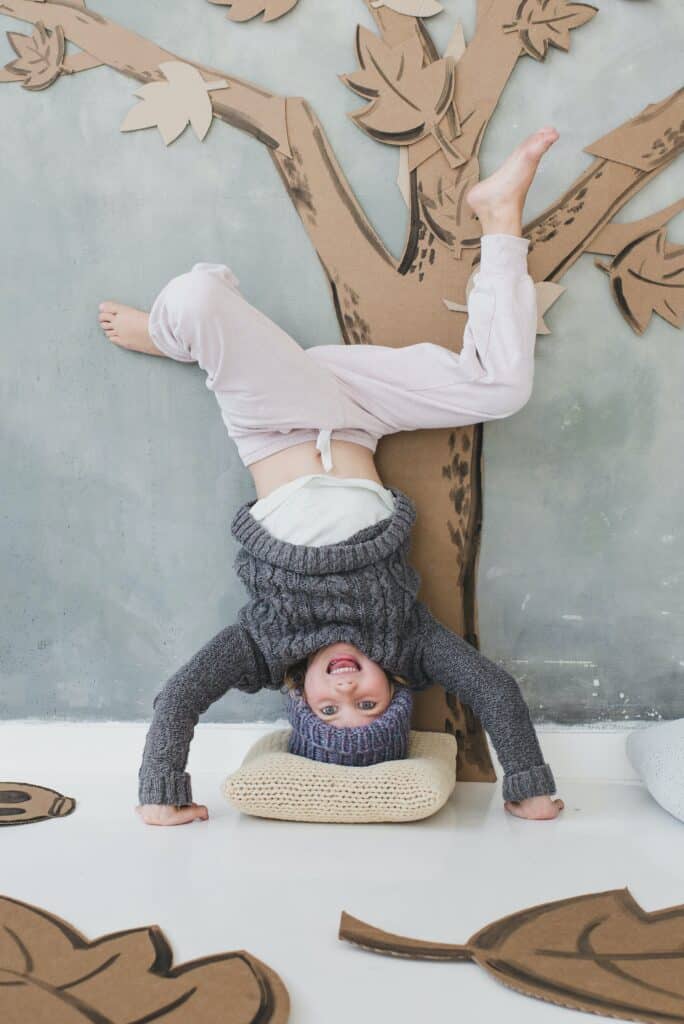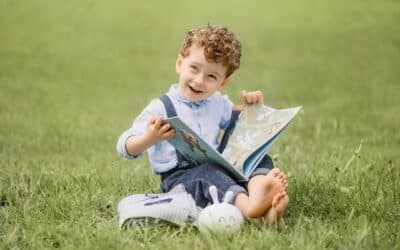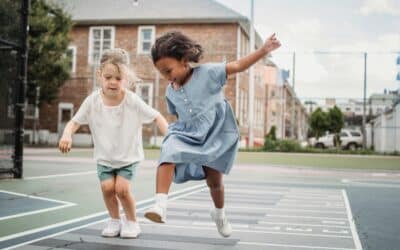As your toddler grows up, the thought of how you can further support your child in their learning journey has probably crossed your mind. It certainly did for me. Right about the time that Nina turned two.
Whether this be “How can I help them learn their ABCs?” or “ How can I help them learn to read?”, directed learning can help you to master the fundamental principles of learning. My own learning journey started with developing my understanding of directed learning.
My partner, Ailin, and I have had many enjoyable hours spent engaging in directed learning withNina. We found directed learning to be pivotal to engaging Nina in her learning sessions.
In this guide my goal is to share with other parents, caregivers and those working within the early educators, what I learnt from studying many comprehensive resources, and from implementing what I learned. Hopefully, this one guide will save you many hours of reading so that you can focus on the more fun part of actually ‘doing; directed learning exercises with your toddler.
A solid understanding of directed learning techniques certainly helps when it comes to effectively implementing these activities.
Within this guide, the sections delve into detail about:
- What directed learning actually is.
- The benefits reaped from directed learning.
- Appropriate activities for a range of age groups.
- The role of parents and educators.
- Potential challenges.
- Helpful resources.
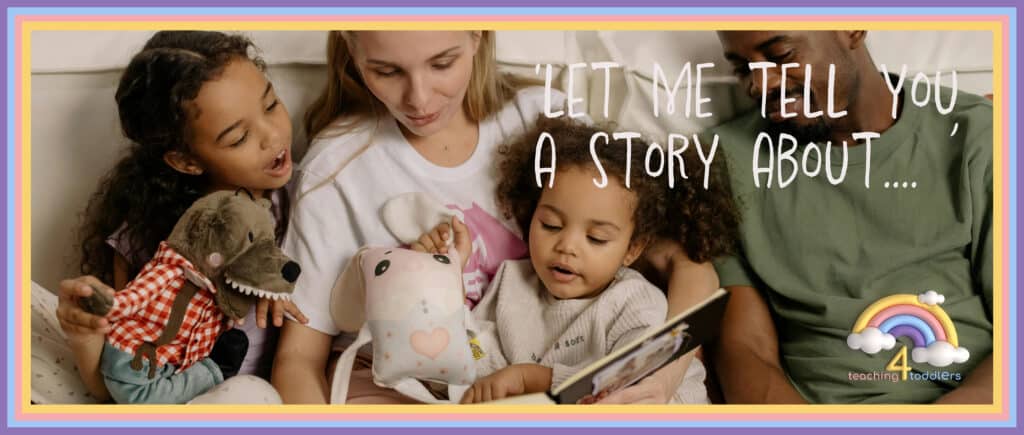
What is directed learning for Toddlers?
Directed learning is the term used to firstly, describe the learning activities which are structured and planned with specific objectives to target development in mind. Secondly it is the term that refers to toddler learning activities where the parent (or caregiver) takes an active role in the learning session.
So for toddlers, common targets may be focused on fine tuning their motor abilities, language development, reading, numbers, creativity, problem-solving, and social skills.
Directed learning does not mean that toddlers cannot engage in unstructured play (which is also crucial for natural development), it is just an added opportunity for toddlers to further engage in activities tailored to their developmental stage in their education adventure.
A core aspect of directed learning for toddlers is parent engagement. Most parents will spend a lot of time engaging with their child. The key here, is to engage in a structured way that supports the learning exercise. So really, its about structure. Engaging with your toddler, with the intention of guiding and supporting their learning activity.
Personally we revelled in mapping out directed learning sessions to engage our daughter Nina in. We hope that we can put passion into your own learning journey.
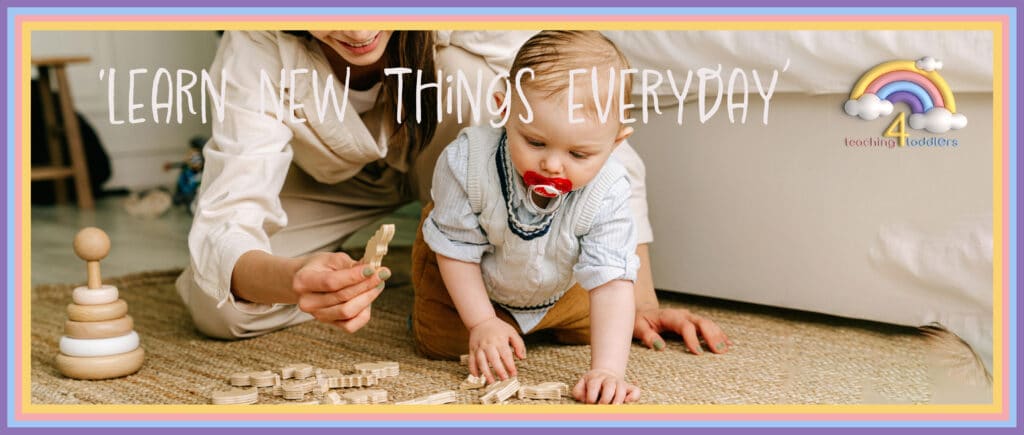
What are the benefits for toddlers from directed learning?
There exists a vast collection of academic research demonstrating the many benefits of directed learning. The US national Library of Medicine has an excellent article on this.
However, if you are not inclined to read through dozens of pages of academic text, we summarise in this guide the key benefits that a parent should be aware of. Directed learning harbours a variety of benefits to toddler’s growth in a multitude of areas, as you’ll see.
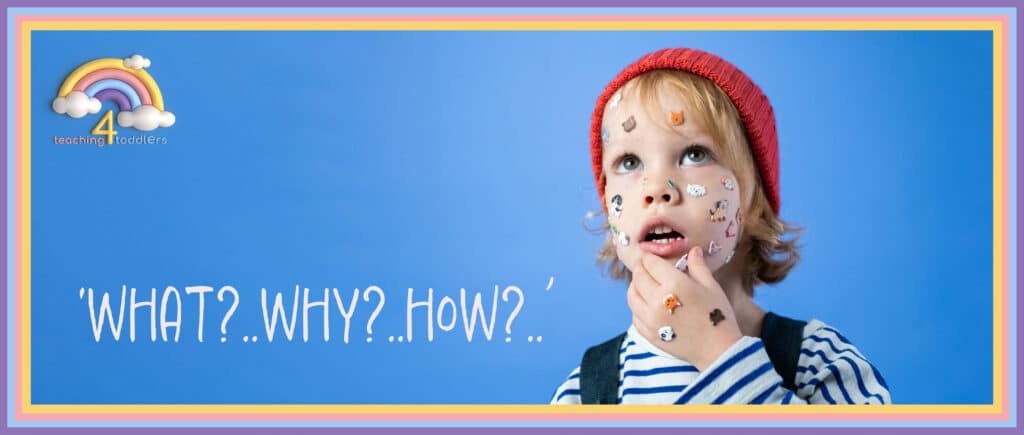
Cognitive development
At the core of your toddler’s learning is their cognitive development. Cognitive development refers to the ability of their brain to process information, and to ‘think’. Cognitive development represents a key developmental potential indicator in early childhood, being one of the four domains that a child from 36-59 months is assessed upon in the Multiple Indicator Cluster Survey (MICS).
Through directed learning, cognitive development can be cultivated and developed at a faster pace than would otherwise be the case. As toddlers engage in tasks that are designed, and structured, to enhance their thinking, reasoning, memory, and their attention span, they will develop at a faster pace.
Of course, we all know that toddlers attention spans are inherently short. This is where directed learning supports the child’s earning by working to keep their focus and engagement on the learning activity they are talking art in.
Active parent engagement in the activity will naturally encourage the toddler’s focus. Have you noticed that your toddler loves to do what you are doing?!

Emotional and social development
Another key benefit of directed learning is the role it can play in enhancing emotional and social development.
Emotional development can be improved, via directed learning, by helping your toddler to understand and express their feelings (aka their communication skills). In doing so, this facilitates social development through increased opportunities to interact with their peers, or adults, and thus learn how to share, take turns, and cooperate with others.
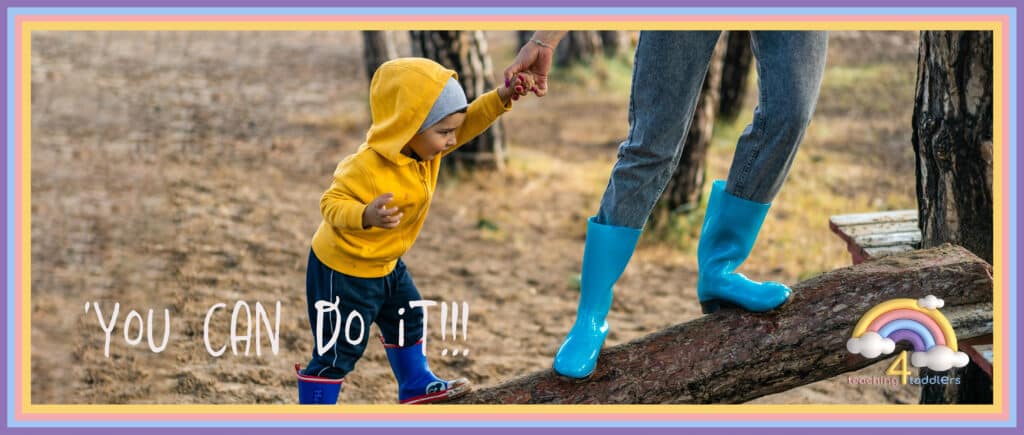
Physical development
Children can be encouraged to engage in tasks that require the use of fine and motor skills. This will help to develop and practise their coordination. Areas to focus on when developing coordination in your toddler are their eyes, fingers and tongue. Doing so will eventually aid them to one day get dressed, eat and write on their own.

Fostering a love of learning
Directed learning allows toddlers to learn about topics they enjoy leading to a greater understanding of it. Toddlers’ questions expressed during directed learning sessions allow them to develop inquisitive natures. It will assist them to explore and investigate new concepts and in doing so expand their knowledge of the world they live in.
If your toddler has plenty of experience in asking you ‘why’, they’ll be less hesitant to ask this question of their teachers in the future.
It is important to allow your toddler a level of freedom in deciding what they will learn about during their directed learning session with you. Of course, you’ll have to ‘guide’ them to the preferred choice! By letting toddlers choose what they want to learn, it will relieve them of any pressure or frustrations so they can truly enjoy and start to love learning – a fundamental trait for lifelong learners.
By encouraging a love of learning in your toddler you will set their mind on a path of curiosity that is more likely to lead to increased academic interest once they start school. There is a mass of academic evidence to support this assertion. Believe me, I’ve read these academic articles. 100s of pages of them.
If you are minded to also delve into the academic research them this article from the US national Library of Medicine is valuable reading. It will also point you towards a wealth of related articles. What’s clear is that from birth until the age of about eight years old a child’s physical brain structure develops, and the developing structure is influenced by the child’s learning experiences.
I actually kind of ‘blew my mind’ when I realised that the work Ailin and I do with Nina during her directed learning sessions is actually causing positive physical structure changes in her developing brain. What parent wouldn’t want to support an open mindset in their child, and assist in the physical development of their brain, when this will enable them to learn more quickly and retain information more effectively!

Self-direction, self-confidence and a sense of responsibility
In a directed learning environment, children are free to take charge of their learning, thus developing a habit of self-direction and understanding that learning is a selective choice to educate themselves.
This is something that carries into later life, and equips them with the discipline to strive in their future endeavours. This form of self expression also allows for the building of confidence without fear of making mistakes and instead learning from them.
In turn, it allows them to feel proud and create a portfolio of their accomplished tasks so they know from previous experience they can complete tasks independently.
Children will soon realise that ‘taking the wheel’ for their learning is not the only aspect of their life they can have input in, and so can take responsibility and rely on themselves in other areas too.
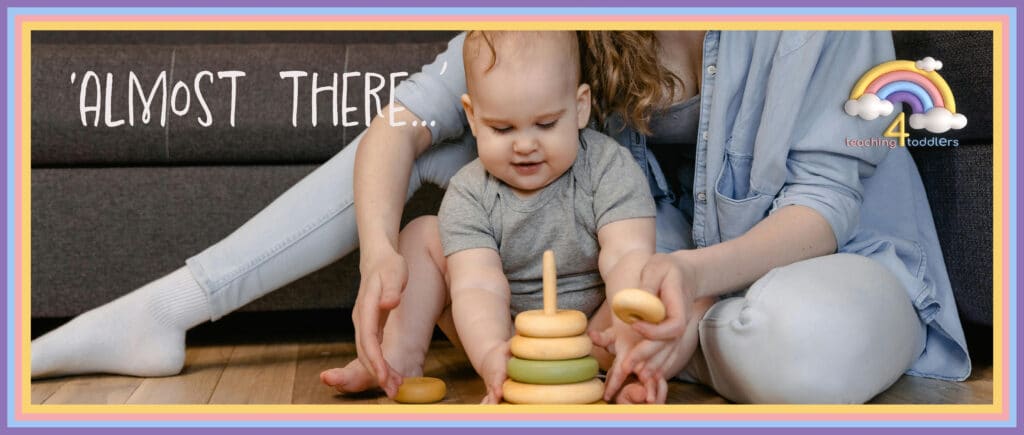
Age appropriate directed learning activities for your toddler
Ok, with the fundamentals of directed learning covered, let’s take a look at age appropriate learning examples.
The age of your toddler can act as a checkpoint for what targets you should aim for your child to reach.
- 1 year old: At this point, due to it being the earliest exposure to directed learning, tasks should mainly focus on being simple and fun! A great activity to consider is the “Container and Lid Matching Game”.
To do this activity, the adult can provide various containers and their lids and allow the child to match each lid with its corresponding container. the parent should engage in the play. For example by picking up a lid and passing it to the toddler and asking them to put it on the container it matches. if the toddler struggles to match the lid to the correct container talk to them about the similarities and differences between the lid they are holding and the containers. If needed you can match the lid to the container, but be sure to talk them through why it matches.
This game will allow the child to develop not only their fine motor skills but also their problem solving skills
- 2 years old: Toddlers at this age can enjoy activities with a bit more complexity and require more brain power. The “Colour Sorting” game is an excellent directed learning task using any toys or blocks you have available to hand.
Using coloured toys or blocks, the toddler can be guided to sort the items by their respective colours. Again the parent should actively engage with the toddler by asking them questions, and making comments. For example, ask them what colour a particular block is. Then ask them what colour a matching block is. Then help them move the matching blocks into a small pile. then encourage them to do the same themselves.
This exercise enhances cognitive development by learning how to categorise and recognise colours. Handling the blocks will also assist fine motor skill development. - 3-year-olds: Directed learning can now start to involve pretend play and more complex tasks to stimulate toddlers’ imagination.
For example, “Role-Playing Games” such as playing house or pretending to be at the doctor’s office encourages language development, creativity, and social skills by simulating situations they may encounter later on.
When planning out a role play game stick to environments that the toddler will be familiar with. The doctors office and the supermarket were popular favourites with Nina. Props are not essential but the play experience can be enhances with a simple set of props.
Yes, your probably thinking – is three examples all I get!
Well, actually yes. At least in this guide.
My goal in this guide has been to introduce you to, and to explain, the concept of directed learning. You can Read my guide to Directed Learning Examples, and the associated walkthrough guides for each activity example. I’d encourage you to hold of doing so thought until you’ve read the rest of my guide. My FAQs at the end are worth the wait!
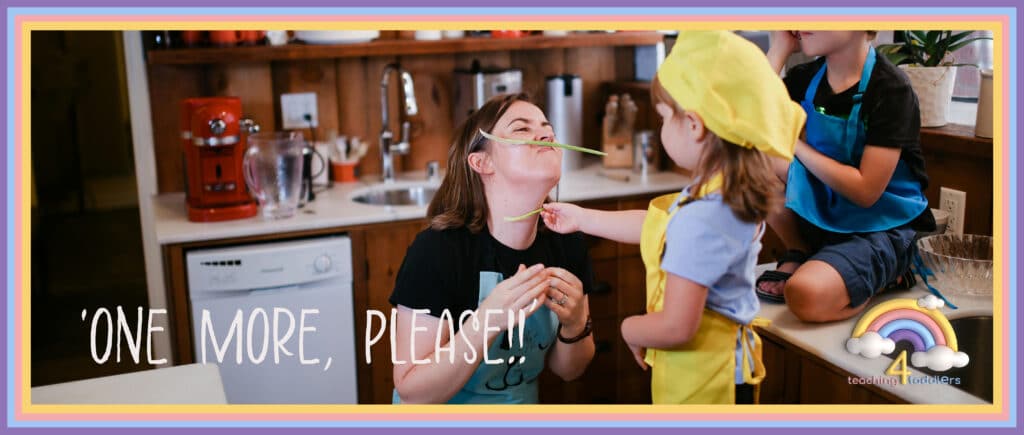
The crucial role of parents and educators in directed learning
As a parent engaging in directed learning with your toddler, your role is to bring about the desired outcome in the toddlers’ learning session, in a guiding, yet unobtrusive manner.
Parents (and educators) can take responsibility when it comes to setting up the activity, explaining and showing how it is done, by acting as a role model in the task before following up with the child’s reenactment.
It is important that the child receives positive reinforcement during their exploration of the activity. This positive reinforcement will allow the child to feel a sense of accomplishment and to know they are moving in the right direction. SO be sure to compliment and congratulate your toddler, or tell them how great they are as you celebrate their little achievements with them.
It is important to remember that each individual child may take a different length of time to complete an activity. It is imperative that as parents and educators we remain patient and avoid frustration by pushing the child too hard. Directed learning is meant to be a positive and enjoyable experience – for toddler and parent!
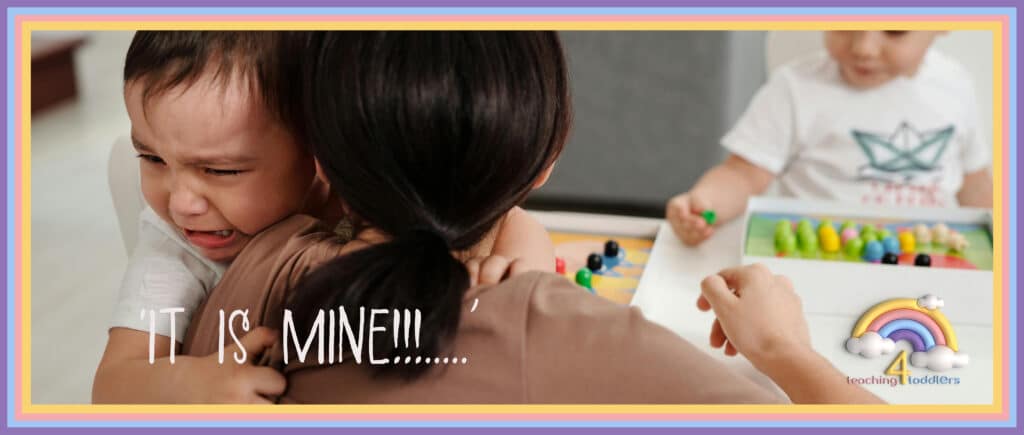
Potential challenges you may face and how to tackle them
Directed learning can sometimes be challenging for both the toddler in question and the parent guiding the activity; toddlers are known for their short attention spans and need to act in alignment with their own interests.
This means that it is essential to keep directed learning sessions short and enjoyable. This should be taken into account when structuring and planning the activity. If a child seems frustrated or disinterested, a good course of action might be to switch to another activity or allow for some free, unstructured play temporarily before trying again.
Remember that every child is unique. What works for one might not work for another, so keep experimenting with different activities until you find what resonates with your toddler.
Direct Learning for Toddlers: Resources
There is a multitude of resources out there to provide insight or support into directed learning. A good example is “Einstein Never Used Flash Cards” by Kathy Hirsh-Pasek and Roberta Michnick Golinkoff. This book provides a detailed look into how children learn. It’s a little pricey but well worth the read, and a book we definitely recommend.
You can also use technology to your advantage by using online platforms such as ABC mouse which offer lots of age-appropriate learning activities. Note, it is a paid monthly subscription website and iPad app.
For engaging experiences which are more hands-on, you can look at puzzles, building blocks or Lego, and art and craft projects which are safe for toddlers. Of course their is also my guide to Directed Learning Examples which features leaning session examples that we enjoyed with Nina.
Toddler Directed Learning FAQs
To finish of this guide I’ll cover off some of the most common questions that I had when I first set about to understand directed learning.
What is child-led directed learning?
Child-led directed learning is the name given to a learning approach where the child is encouraged to take on an active role in determining what they learn about and how they learn. This is as opposed to parents or educators acting as traditional instructors that just tell the child what to do.
Personally I have mixed feelings on this one. If Nina had her way she’d tell me that her iPad and YouTube were the best sources of learning! That said we have adopted an approach to learning sessions where Nina has a lot of say in what we will learn about/practice/do etc in the session.
A few key principles of child-led directed learning are personalisation to the child’s uniqueness and learning styles. Providing the freedom for the child to explore what they enjoy and set the pace, and active engagement with focusing on real-world applications.
Although child-led directed learning is a great way to promote self-discovery and deeper engagement during their learning process, I personally believe that it’s important to realise that a balance between parent-led and child-led leads to better results.
How do you encourage directed learning in toddlers?
Encouraging directed learning in toddlers is all about creating a supportive, safe environment which is also stimulating. Aim to encourage exploration and curiosity. A few strategies to consider, and that we used with Nina, are:
- Pick activities that the toddler is already interested in: this allows you to set a ground for discussions in which they are more eager to engage in and then take the lead in. For example Nina loved drawing and painting from a very early age. We based many of her learning sessions around drawing and paint. Whether it be numbers, letters or reading (yes you can paint letters and then have your child read them).
- Be playful and match their energy: getting down on their level to play next to them makes you more present to allow them to engage with the activity and you as well if they have any questions. We found the use of puppets (well actually Nina’s soft toys) with me doing the voice of the puppet really had Nina engage in an activity.
- Offer choices: this could mean picking between two toys or picking what snack they would like to eat, either way this promotes making decisions and empowers them to decide what they want for themselves.
- Ask open-ended questions during the learning sessions: this allows your toddler to think for themselves. It will encourage critical thinking rather than spoon-feeding of answers. This way, they are more likely to have a broader sense of exploration and a deeper understanding of the topic since it will stimulate their curiosity.
If you have made it all the way down here, then you hopefully realise that directed learning is a structured approach to aid a toddler’s development which can be used in conjunction to free play.
Through understanding what directed learning is and how to use this technique, you can ensure that your own toddler will have a positive outlook and approach to learning – for the rest of their life.
Thank you for making it all the way through my guide. If you have any comments please do leave them below. I’ll do my best to answer them.


